Welcome to the Summer / Autumn 2016 issue of the newsletter. If this is your first newsletter as a new plot holder in 2016, we say a particularly warm welcome to you and hope you are enjoying rolling up your sleeves and getting stuck in to your first season. Perhaps you are a novice gardener willing to ‘have a go’, or an experienced vegetable grower, whichever you are, you will now find you gently become part of a like-minded community of people willing to respect your peace and quiet in your new space, or assist you with your emerging queries about your new piece of land. Welcome also, if you are a visitor to the Syston Allotment OPEN DAY 7th August, we hope you enjoy your ‘taster’ day coinciding with a Produce Sale. Perhaps you may consider the various benefits of having a plot yourself. The winners of the Kids Tallest Sunflower and general competitions of Best Produce Box / Funniest Shaped Vegetable / Best Use of Produce or Best Newcomer Plot, will be announced on the Open Day, on Facebook, in STN magazine and in the next newsletter. Good luck and well done to all entrants.
This newsletter issue will focus on what our weeds tell us about our soil, following on from the last edition’s ‘Tips for sandy soil’ and ‘Attracting beneficial insects’. We will also focus on one particular pest that has afflicted many of us in 2015 /2016.
This newsletter edition is the first from a new collaboration between ‘the two Kates’ (Plots 19B and 54). We hope we will continue to produce a worthy newsletter.
We’d both like to say a huge thank you to Jackie Stanley who has previously set the bar very high producing the informative newsletter for several years, in addition to her busy former role as the Allotment Society Secretary…and it seems …her role as co- author of a new imaginative fiction book. We wish Jackie every success with her creative ventures.
The paperback / Kindle book is available on AMAZON.
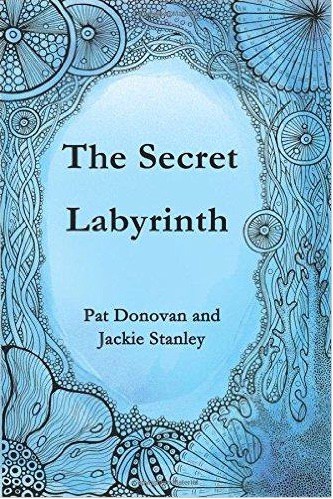
ALLIUM LEAF MINER AND LEEK MOTH CATERPILLAR DAMAGE
FAMILIAR? All too many of us have experienced a rather disappointing abundance of these pests, primarily on our leeks this 2015 / 2016 season. These Allium leaf miners or Leek moth caterpillars can also affect onions, chives, shallots and garlic. They have devastating effects on our produce.
This problem is a new arrival in Britain since 2002. Having reached the Midlands from the South East, the problem is now spreading further north.
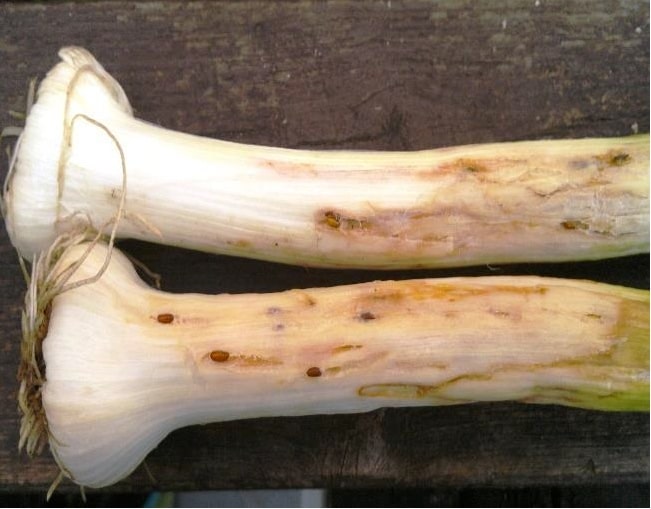
The Allium leaf miner has two growing cycles a year. The first generation of the flying form (pictured) is March to April, the second is October- November. The RHS advises covering crops at these optimum times, with ultra fine Enviromesh or similar insect proof mesh, to prevent the egg laying cycle. The second cycle is apparently the most damaging.
The effects of Leek moths and Leaf miners are very similar – first signs of problems are patches of white on foliage (Leek moth) or lines of white dots (Leaf miner). After sucking sap, females lay eggs which develop to the cylindrical brown stage, which becomes very obvious to see. Then comes the white maggot stage before flies emerge. Both pests introduce fatal fungal and bacterial damage.
According to the RHS and other sources, no commercially available chemical pesticide product is likely to eradicate them, so covering is essential.
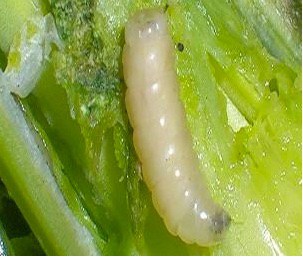
Crop rotation is very important now this issue has become a regular occurrence. This is vital as residual pupae may be present in the soil, even if you have covered the crop. Also very important is ground cleanliness- clear away and destroy affected debris.
A potentially effective measure is to grow your leeks to a more mature stage under protection before planting out.
If you find any winning ways to avoid or cure this pernicious problem – DO spread the news! – (preferably more rapidly than the problem spreads).
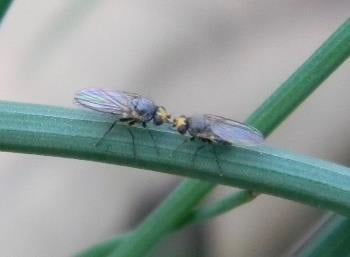
WEED AWARENESS: Does it pay to notice your weeds?
We all have weeds on our plots. Some of them seem much more successful than the crops we’d like to be growing. However, there may be ways in which noticing weeds can help with productive cultivation. Different weeds like different conditions, so if you notice the types of weed on your plot changing over the years, of if you get a pocket of a particularly dominant weed, this can give you a rough guide to variations in soil condition.
For instance, if you have a patch of fat hen and nettles (we have two types on the allotments, Urtica dioica, the ordinary stinging nettle and Urtica urens, or annual nettle, which is extra stingy) it’s a good sign that the soil is rich in nitrogen and not compacted. Dock and horsetail together may tell you that that patch of soil is wet and acidic: unlikely on Syston allotments.
We get a lot of bindweed and shepherd’s purse: both indicate light soil. If you find an area of clover, daisy, and plantain it’s likely that the soil has become compacted. And although we might curse at the abundance of sow thistle, red dead nettle, dandelion, chickweed and shepherd’s purse all growing together, this is actually good news – this combination shows that you have a soil that is in good condition and neither too acid nor too alkaline. Basically, the more vigorous your weeds are, the better the health and condition of your soil, and the more different types of weed you have, the healthier your plot and the more types of crop you will be able to grow. If your soil does not grow any weeds at all there is something wrong.
Syston allotments contain far too many species of weed to list them all here, including well-known ones like dandelion, shepherd’s purse, nettles and bindweed. Here are a few that are familiar by sight but not so well- known by name:
Black nightshade (Solanum nigrum)
Garden organic describes it as a ‘plentiful and troublesome weed of agricultural and horticultural fields and gardens’. Each plant can produce up to 400 berries each containing about 40 seeds. The seeds can still germinate after 80 years buried in the soil.
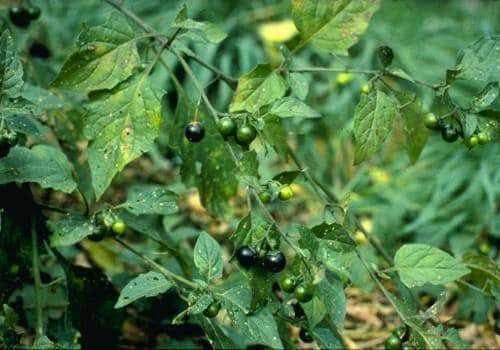
Gallant soldiers (Gallinsoga parviflora)
This likes damp, rich soil so if you have a lot of it you are doing all the right things. Garden organic says it was introduced into Kew gardens from Peru in 1796. It’s a really good idea to pull this up before it seeds – each plant can make 2000 seeds and they are dispersed by the wind.
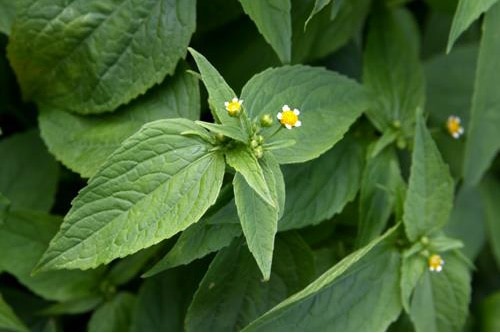
Common fumitory (Fumaria officinalis)
I’ve only seen this on a few plots, it is not actually very common in Syston. It has medicinal uses apparently (for skin conditions), and the flowers have been used to make a yellow dye for wool.
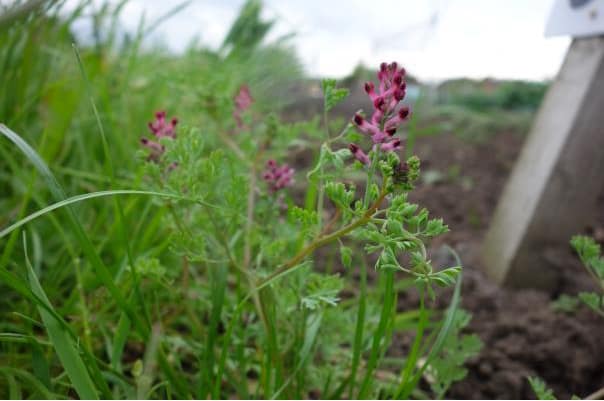
Canadian fleabane (Conyza canadensis)
This was introduced into the UK around 300 years ago, apparently in the stuffing inside imported stuffed birds (taxidermist stuffing, not Paxo). It does not become well established except on land that is not much cultivated (eg beside path).

Weeds to watch out for:
Most people have their own ‘most-hated’ weed but here are a few stubborn ones:
Horse radish loves our soil. It’s a striking plant and the roots are wonderful if grated and made into horseradish sauce BUT it is really hard to get rid of. The roots become enormous. If you find a small plant, beware: it will grow. If you want to know what it looks like we have at least one accidental one on plot 54 and will be happy to show them to you, especially if you dig them up without damaging anything else, and take them away.
Bindweed is a plant which will re-grow from the smallest piece of root, but its flowers somehow make it more acceptable than couch grass.
And last but not least: Couch grass is the bane of our plots. Monty Don says the only way to get rid of it is to dig up every scrap of root and burn it, but when we took over our plot which was infested with couch we successfully composted the roots by keeping them all separately in a huge pile of black bin liners for three years. They eventually made lovely crumbly soil. (We did have to treble dig and sort through each spade full of soil by hand to get them out first). Some people say you can get rid of couch grass by sowing turnip seed thickly in amongst it. Maybe someone on our allotments would like to test this? Do let the rest of us know if it works.
Turning Area / No Parking
Syston Town Council have kindly supplied a new sign that has been erected to further emphasize that there is no parking on site. The turning areais to be kept clear at all times for short deliveries and pick ups only. Parked vehicles can cause disruption and delay.
Please be considerate to all users.
Volunteers
Don’t let the same people have all the fun! Everyone is welcome to join in with the various activities throughout the year. Let the Committee know if you want to join in. The more hands the merrier.

Terry, Paul, and Mick
Allotment related books
‘Minding my Peas and Cucumbers – Quirky Tales of Allotment Life’
by Kay Sexton
(Charming, oddly moving & genuinely useful)
‘One Man and his Dig’
by Valentine Low
(Indispensible guide to allotment life for all green-fingered urbanites)
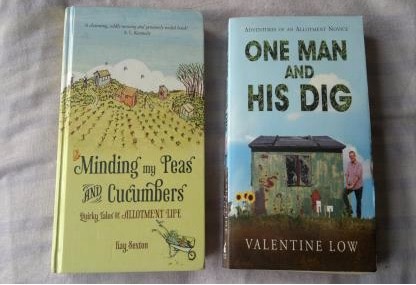
SPRING PLANT SALE
On 21st May 2016 the Allotment Society held a plant sale and raised £190 for the allotment funds.
Huge thanks to everyone who helped on the day, and to those who raised extra funds by selling / buying the plants that were not snapped up in the Town Square.
If you are new to the allotments, you might like to know that we hold two sales each year, a plant sale in the spring and a produce sale in the summer. Plants and produce are donated by plot holders – so if you ever have any excess plants or produce for the sales they will be gratefully received! Check the notice board / social media or word of mouth for reminders.
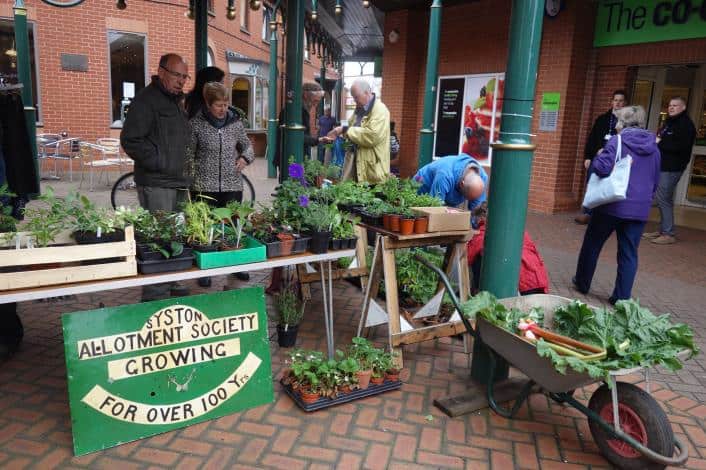
Hedgehogs, Slugs and Snails
As always, hedgehogs have a hard life even on a slug abundant allotment site. They can’t eat them all.
Our constant battle with slugs and snails perennially exasperates us to the point of trying anything and everything, eg Vaseline on pots or cardboard rings placed around plant stems, egg shells, sheep’s wool, wool based pellets, copper tape on pots or edges of raised beds. Salt, beer traps, wilted Comfrey leaves used as decoy etc. These organic methods are obviously safer for other creatures, such as hedgehogs, who suffer horrifically with poison pellets. Metaldehyde is to be avoided and is thought to be in the process of being banned. Even if this chemical doesn’t kill hedgehogs outright, it affects their reproductive system and that’s very bad news for an endangered animal.
(Thought to be less than a million left. Numbers have fallen 30% in last 10 years. Source: Wildlife Trust).
If you do find a sick hedgehog in the daytime, don’t ignore it (though it is generally better to leave other wildlife where they are and seek wildlife rescue advice first before putting them through the stress of removal, perhaps unnecessarily). A suspected poisoned hedgehog that was found on the allotment site last August was immediately taken to local hedgehog rescuer, Pat Wadd in Queniborough. Named Tommy Rex by the finders, this unfortunate hedgehog was so ill he spent 9 months in Pat’s care, before release in the Spring of 2016. He could not be released back at the allotments for fear of further risk of poisoning from pellets.
Security
On the 9th of April, PCSO Jo Freeman and a community volunteer had a Crime Prevention table at the gate of the allotments, following the unsettling and persistent spate of shed vandalism in the Spring. The Fire Service also kindly contributed shed alarms and motion sensors.
Ms Freeman gave out free security devices, burglary and vandalism deterrent information, window labels / stickers and general protection advice for plot holders.
As well as the free equipment, there were some items for sale, including a strong £10 padlock combined with an alarm. Should anyone wish to purchase this, please contact: PSCO 6612 Jo Freeman – telephone 101.
There are no guarantees with any device of course, but they can provide some peace of mind.
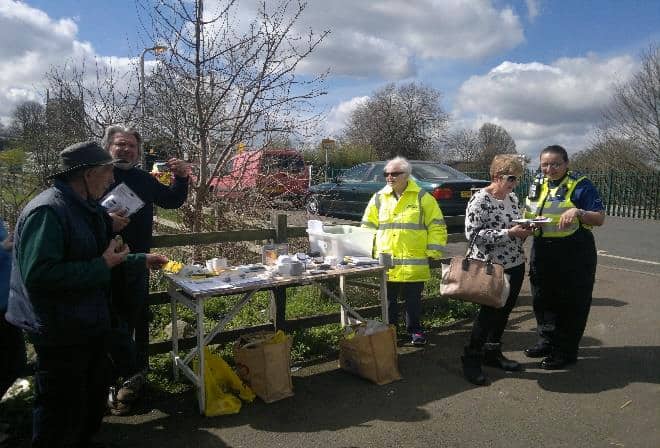
2016 Committee Meetings
Committee meetings are held on the first Tuesday of the month at 7.45pm at Syston and District Social Club, High Street, Syston.
All plot holders are welcome.
As well as learning about Committee business and relevant events (especially useful if you are not on facebook, but want to keep informed), the meetings are an opportunity for plot holders to get to know each other and feel part of the allotment community.
It’s very good to see kids of varying ages and abilities enjoying being down on their family plots and even winning competitions with their efforts, whether it’s growing the tallest sunflowers or nurturing their own patch of produce. We hope lots of aspects of allotment life appeal to kids, for example: vegetable growing skills, eating tasty fruit and veg’s they’ve grown themselves, plant identification, spotting wildlife, learning about nature, spending good times with family and friends, joining in with events and competitions.



